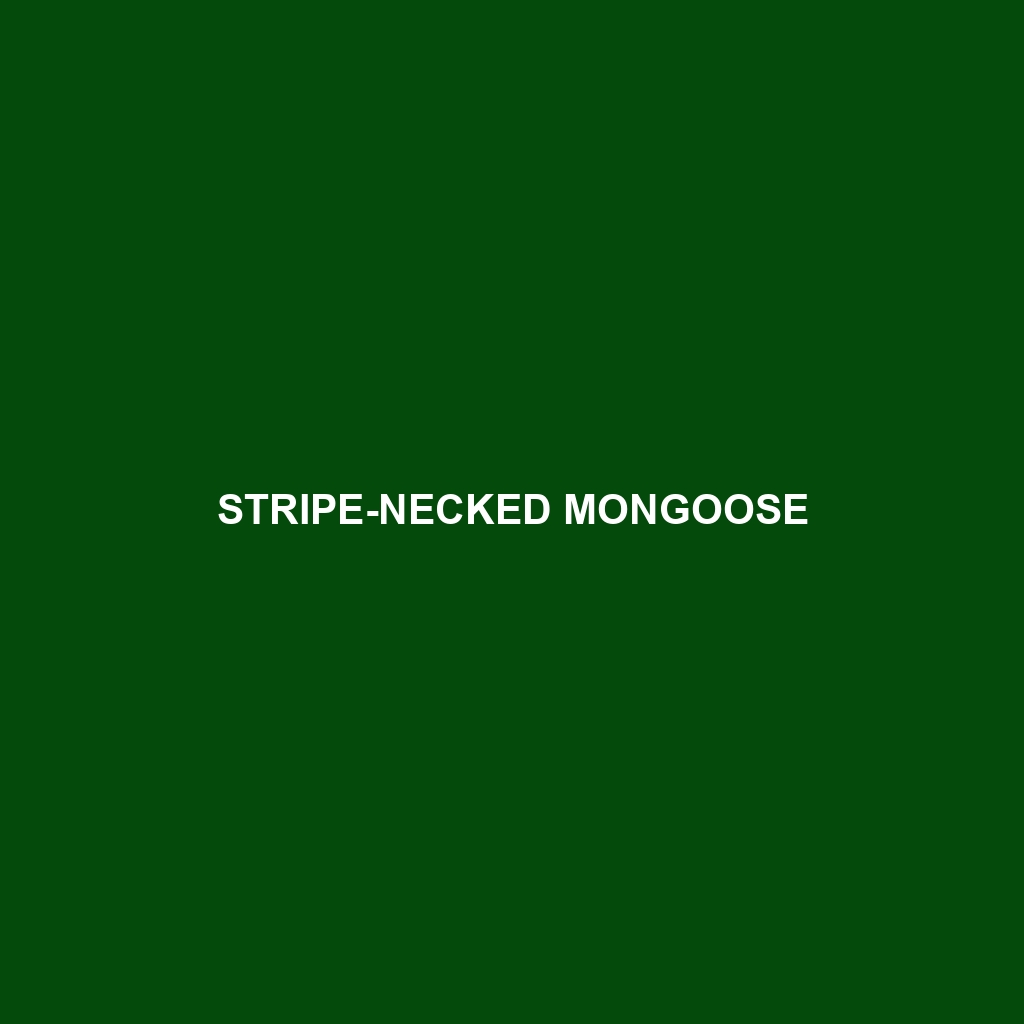Crab-eating Mongoose: A Fascinating Species Overview
Common Name: Crab-eating Mongoose
Scientific Name: Herpestes urva
Habitat
The Crab-eating Mongoose is primarily found in Southeast Asia, particularly in countries like Thailand, Myanmar, and Indonesia. This species thrives in diverse environments, including tropical forests, mangrove swamps, and coastal areas. Known for its adaptability, the Crab-eating Mongoose is often observed near water bodies, where it can hunt for its preferred prey.
Physical Characteristics
The Crab-eating Mongoose is a medium-sized mammal, generally measuring between 50 to 70 cm in length, with a weight range of 4 to 6 kg. Its fur is predominantly brown or grayish, featuring lighter underparts. One distinctive characteristic is its elongated, slender body and bushy tail, which contributes to its agile movements. The Mongoose’s sharp snout and keen eyesight make it highly effective in its hunting endeavors.
Behavior
Known for its curious nature, the Crab-eating Mongoose is a social animal that often forages in small groups. These creatures are diurnal, meaning they are active during the day, which makes them easily observable. They display fascinating behaviors such as rolling in dirt and grooming, which not only aids in cleanliness but also helps regulate temperature.
Diet
The diet of the Crab-eating Mongoose primarily consists of crabs, mollusks, and small aquatic animals, but they are also opportunistic feeders. They hunt a variety of food sources, including insects and small vertebrates. Their keen sense of smell and intelligence make them adept at locating food, showcasing their role as scavengers in their habitat.
Reproduction
Crab-eating Mongooses typically breed once a year, with a gestation period of about 60-70 days. Litters usually consist of 2 to 4 offspring, which are born blind and helpless. Mother Mongooses show significant care for their young, teaching them essential survival skills. The mating season tends to occur during the rainy months when food is plentiful.
Conservation Status
The current conservation status of the Crab-eating Mongoose is classified as “Least Concern” according to the IUCN Red List. However, habitat loss and hunting pose threats to its population in certain regions. Conservation efforts are necessary to ensure sustainable environments for this adaptable species.
Interesting Facts
– The Crab-eating Mongoose is one of the few mongooses that has adapted to a semi-aquatic lifestyle.
– They have been observed using tools, such as rocks, to crack open hard shells of crabs.
Role in Ecosystem
The Crab-eating Mongoose plays a crucial role in its ecosystem as both a predator and prey. In regulating the population of crustaceans and small fish, it contributes to the balance of its habitat. Additionally, as a food source for larger predators, it is an integral part of the food web in its environment.
